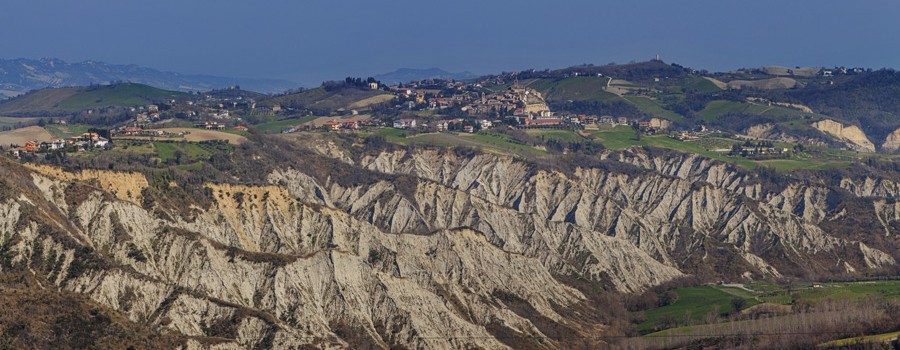The charming village of Castignano, nestled in an area with distinctive deep ravines known as “calanchi”, has ancient origins, as documented by the “stele of Castignano”, a boundary stone one metre in height, is dated seventh–sixth century BC. In the eleventh century, Castignano returned to the territorial rule of the Abbey of Farfa and then came under the authority of the Bishop of Ascoli, never fully accepted.
The Addolorata crypt dates back to the Farfa period. This small church has several aisles and a cross-vault ceiling that houses an Our Lady of Humility attributed to Vittore Crivelli, a Virgin and Child with Saints by Vincenzo Pagani, and a polychrome terracotta Pietà dated fifteenth century, venerated with strong devotion for centuries by the inhabitants of Castignano.
After the tyranny of Boffo da Massa from 1369 and 1380, in the early years of the fifteenth century Castignano came under the authority of the Roman Court and then returned to rule by Ascoli. The turning point in its destiny came in 1585, when Sixtus V placed the territory under the jurisdiction of the Bishop of Montalto delle Marche. Just five years later the municipality of Castignano was endowed with its own statute.
Castignano, in addition to being known for the Templaria event, a Medieval re-enactment staged every summer that makes the village even more charming, is also famous for a typical product, its fragrant aniseed. Moreover, the church of Santi Pietro e Paolo in Piazza San Pietro is home to the Museo Sistino di Arte Sacra, a museum that describes another important page of Sistine history in Piceno territory. The impressive fifteenth-century fresco found here depicts the Last Judgement, and a silver-gilt reliquary contains a precious filigree cross.


















